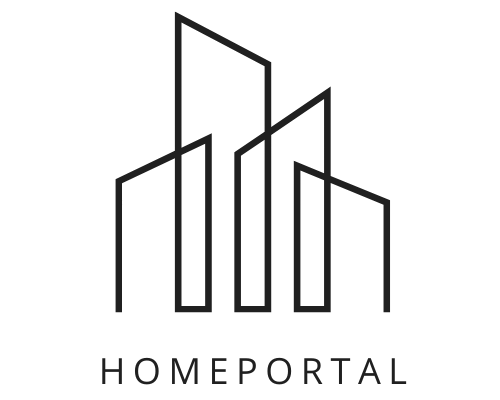An increase in fixed rates by lenders, brings them closer to 4.5%
An increase in fixed rates by lenders, brings them closer to 4.5% The previous week saw a rise in bond yields, which led to an increase in the variable and fixed mortgage rates offered by lenders across the country. Rates on 5-year fixed mortgages have been increased by 20 to 25 basis points at major financial institutions such as RBC, TD, and BMO, which all currently offer uninsured rates of 4.39 percent. This change comes after a nearly 10-bps increase in the yield on the Government of Canada’s 5-year bond, which is the benchmark for 5-year fixed rates. On Friday, the yield on a 5-year bond reached a new 11-year high when it closed at 2.88 percent. Bond yields have increased by more than 165 basis points since the beginning of the year. According to the data tracked by Rob McLister, rate analyst and editor of Mortgage Logic, the average uninsured 5-year fixed-rate among national lenders is now 4.37 percent. This represents an increase from the rate of 3.92 percent a month ago. The rate on an insured, fixed-rate mortgage for five years with a down payment of less than twenty percent has increased to 4.14 percent, from 3.78 percent one month ago. This represents an increase from the previous rate. That means that fixed interest rates have increased by approximately 40 basis points in the space of just one month. To put this into perspective, an increase in the rate of 50 basis points results in a roughly $25 higher monthly payment for every $100,000 of debt when amortised over a period of 25 years. New borrowers and those renewing a mortgage are facing significantly higher rates compared to just a few months ago and potentially double for those renewing a mortgage. While this does not affect the majority of borrowers with fixed rates, it does impact new borrowers and those renewing a mortgage. Following the Bank of Canada’s next rate decision meeting on June 1, at which it is anticipated that it will raise interest rates by another 50 basis points (bps), variable interest rates are likely to surge once more in the wake of this development. This may cause the prime rate, which is the rate used to price variable-rate mortgages and lines of credit, to rise to 3.70 percent. Impact of rising rates on mortgage borrowers “As interest rates march higher—we expect the overnight rate to hit 2% by October, a projection that increasingly looks conservative—borrowing costs for Canadians will also rise, leaving the average Canadian household to spend almost $2,000 more in debt payments in 2023,” say economists from RBC Economics. “This will erode spending power, especially for the lowest-earning fifth of households which spend 22% of their after-tax income on debt servicing (including mortgage principal and interest payments),” they add. On the other hand, RBC reports that the pandemic contributed to an increase in the amount of savings made by households in Canada. According to what the RBC economists wrote, the pandemic may have increased debt, but it also left Canadian households with an estimated savings balance of $300 billion. That is an enormous safety net, sufficient to cover approximately one and a half years’ worth of payments on the total Canadian household debt. Impact of rising rates on home prices The most recent housing data showed a significant decrease in home sales during the month of April; however, house prices have remained stable across the majority of the country, with the exception of Ontario. In the Greater Toronto Area, home prices have decreased by approximately 6 percent on average, but they have decreased by as much as 22 percent depending on the type of property and the particular region. Since benchmark prices are frequently a lagging indicator, it is likely that there will be additional price decreases in the months to come. In a recent post on move smartly, real estate analyst John Pasalis, president of Realosophy Realty, wrote that”…tomorrow’s homebuyers are going to have a much harder time paying today’s prices if they were paying 5% on their mortgage compared to the low 2% range just a few months ago, and the high 1% range a year ago.” Pasalis pointed out that some people have argued that this isn’t a concern because many borrowers have been qualifying at a stress test rate of at least 5.25 percent, but he suggests that this is an oversimplification of the situation. The mortgage stress test is currently used to qualify borrowers at a rate that is either the buyer’s actual mortgage rate plus 2 percentage points or the benchmark rate, which is currently 5.25 percentage points.According to what Pasalis has written, as these are dynamic measures that will change as rates do, the stress test will also increase, which will result in a reduction in the amount of debt a buyer can take on. He goes on to say that the contract rate influences how much mortgage debt the borrower is willing to take on. “A buyer who qualifies for a $1M mortgage may be willing to take on that much debt when interest rates are 1.75%, but less so when rates are 4% because under the higher rate their actual mortgage payment would be roughly $1,100 per month higher,” he wrote. As a result, if interest rates continue to trend higher, Pasalis says he “would not be surprised if we see some downward pressure on home prices over the next 9 to 18 months due to homebuyers being unwilling or unable to pay today’s prices at tomorrow’s higher interest rates.” Although, he adds that any price decline would “likely be a temporary one due to long-term fundamental factors that have been contributing to rising home prices in the Toronto area.” Related posts. Expert’s Reaction to the increasing rates by the Bank of Canada by admin123 Living in Main Floors- A Great matter of importance for Aging Canadians who want a Pleasant Life Ahead by admin123 National home prices historically higher, listings terribly low
An increase in fixed rates by lenders, brings them closer to 4.5% Read More »



